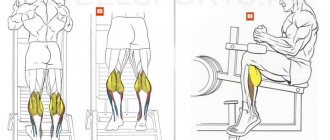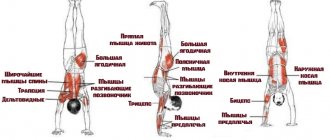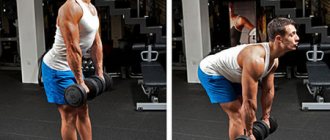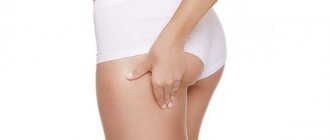Method No. 1: compressor
How to inflate a ball without a needle? Contact any of the car services in your locality - employees will help you for free or for a nominal sum. Don’t ignore tire shops: they will definitely have powerful compressors for inflating car tires. One thing: there is a risk of pumping the product with air, which will lead to its damage or even explosion.
A compressor is equipment from which air comes out under pressure. Therefore, this is an excellent answer to the question: “How to inflate a ball without a needle and pump?” If possible, it is recommended to carry out the procedure together: one person will turn the compressor on and off, and the second will hold the ball and press the cord, controlling the process of air flow. The hose with the nozzle is pressed tightly against the valve, after which the device turns on at full power. It must be decontaminated immediately as soon as the surface of the ball becomes hard. That's all!
Let us also draw your attention to the fact that many models of automobile compressors have special nozzles for inflating balls with air.
How to properly pump up a fitness ball
When purchasing a fitball, you need to take care of its further pumping.
This can be done using a pump or compressor. In some models, the pump is included with the product, so the pumping process is not difficult. It is important to follow the instructions included with the package. But what if the pump is not included in the kit? In such cases, it is not worth purchasing a pump separately, since the price is often equal to the cost of the ball itself. Therefore, in order not to waste time searching, you can use any other pump or compressor that you have at home, putting only a special adapter attachment on it. You can buy an attachment at a hardware store, or where spare parts for bicycles are sold.
As soon as the purchase of a pump or nozzle is completed, you can begin pumping. In order to properly inflate a fitness ball, you should follow the following sequence of actions:
- It is not recommended to inflate the product immediately after purchase, but rather keep it at room temperature for several hours.
- Insert the pump or compressor nozzle into the hole on the fitball.
- Inflate a large fitness ball by moving the pump handle to 80% of the volume, close the hole with the supplied plug and leave it at rest for a day.
- After this, measure the diameter of the product using a centimeter and pump up to the required volume.
- If everything is done correctly, there should be no discomfort during training. The ball needs to have spring on it, not sink into it.
Nuances
When choosing a ball, you need to take into account your weight and height so as not to make a mistake with the diameter. First of all, pay attention to the following parameters of the ball:
- A person's height is less than 155 cm - the diameter of the ball should not exceed 55 cm.
- Height up to 170 cm – diameter 65 cm.
- Height over 170 cm – diameter 75 cm.
- Height over 185 cm - diameter 85 cm.
If your weight exceeds the norm by 15 kg, you need to purchase a fitball 1 size larger.
As a rule, the ratio of height and diameter of a fitball is indicated by manufacturers on the packaging.
Please note that the elasticity of the product must correspond to the data indicated on the packaging. Because when training on an under-inflated ball, problems with posture may arise, and when training on an over-inflated fitball, it will be difficult to maintain balance.
Working out on a fitness ball is of great importance for pregnant women and nursing mothers.
Method number 2: electrical tape, syringe needle, bicycle pump
The tools here are some of the most accessible: a bicycle pump is available in almost every home, you can easily buy electrical tape at a department store or hypermarket, and a syringe at a pharmacy. How to inflate a ball without a needle using this method? As easy as pie:
- Take a syringe needle - the first thing you need to do is sharpen its sharp tip on asphalt, brick, stone, curb or a special knife. If it is too sharp, it will easily pierce the nipple, which will make the ball unusable. The best needle would be for blood transfusion systems - it is thick, durable, and does not bend.
- The second step is to make a kind of adapter from electrical tape - 10-12 layers of it are enough. They need to be wound tightly so that the air does not escape back when pumping.
- How to inflate a ball without a needle? Attach the invention to the bicycle pump and begin the procedure.
How to deflate a ball without a needle
How to inflate the ball has already become clear, but there are times when it is necessary to deflate it. It is quite difficult to do this without a special needle, but you can replace it. In this case, the same needle from the syringe will save you - preferably a thick one. After its introduction, the valve opens and the air comes out. An ideal alternative would also be a medical cannula or a ballpoint pen without an iron tip.
Many people ask how to deflate a ball if none of the above is at hand. In this case, you can use:
- knitting needle;
- a match;
- ear stick (without cotton wool);
- a sharpened toothpick;
- with a regular sewing needle (blunt).
One of the objects is inserted into the nipple, slightly deflected to the side, as a result of which air will flow out and the ball will deflate. This option is more difficult than with a needle, but is also effective. To prevent the valve from deteriorating, it is advisable to lubricate the needle with some emollient (oil, petroleum jelly) and insert it perpendicular to the surface . It is forbidden to move or rotate it too intensively; such actions will lead to a violation of the integrity of the nipple.
Method number 3: syringe
How to inflate a volleyball, basketball, soccer ball without a needle? Use a large medical syringe! This is a last resort, because the method is quite grueling - you will spend about 2 hours on the procedure.
As with the second method, you will need to blunt the needle, otherwise you will damage the nipple and the ball will continue to deflate. Which syringe to choose? The bigger, the better:
- It’s possible to pump up a ball with a twenty-cubic ball in 30-40 minutes.
- A ten-cc syringe will make you pore over the ball for an hour to two.
Before starting the procedure, we recommend that you treat the nipple with silicone grease - this will protect it from damage from an imperfect syringe needle. The procedure is simple: insert the needle into the hole, press the syringe lever, and release the air. Then remove the tool, return the lever to its original position and repeat the procedure.
Before inflating the ball, you need to pay special attention to the steel needle used with the pump. If you run your finger along its tip, you should not feel any roughness (although in most cases, sports stores sell, unfortunately, cheap and low-quality needles). In any case, and especially if there is roughness, remember that the ball’s chamber is made of latex or thin butyl, it is very delicate and can be damaged very easily.
- You need silicone oil specifically designed for balls. It is usually sold in any sports store. For one time, it will be enough for you to apply just a couple of drops of this product to the needle or directly to the nipple itself. This is necessary to protect the inner surface of the valve from damage and to make the nipple of the product more elastic and durable.
- If you have to inflate a soccer ball in the field, in the absence of specialized oil, you can wet the needle with saliva, but not with industrial lubricants for other purposes. Otherwise, you run a high risk of damaging the nipple material.
- Shake the ball so that the camera hangs vertically below the valve hole. The camera must be in a vertical position.
- Hold the soccer ball by the hole panel and carefully insert the inflation needle into the nipple. Pay attention to its quality - the end of the needle should under no circumstances have sharp burrs.
- Inflate the ball with a special pump, carefully monitoring the pressure gauge readings. Typically, the optimal pressure in sports equipment is indicated by the manufacturer on the surface of the product, in the nipple area. For a soccer ball, these figures can be from 0.4 to 0.9 bar.
- If your pump does not have a pressure gauge, determine the degree of inflation of the ball by eye. The “correct” sports equipment should not have a loose surface, but also not be too hard - an overinflated ball will deform in shape over time, the optimal volume will change and the seams may deteriorate.
- Try a simple experiment. Raise the inflated sports equipment to shoulder level and throw it on the floor. If it jumps up to your waist, you have managed to inflate the ball correctly. 8. After playing, it is recommended to release some air from the ball so that the product is not stored at maximum inflated level. This simple technique, used by experienced athletes, will preserve the elasticity of the product for a long time, and its tightness to the seams. Clean the ball with warm water. Wipe the ball with a dry cloth. Place the ball in a ventilated room with a temperature of 15 -20 degrees Celsius.
Method number 4: there is a needle, but no pump
We looked at how to inflate a ball without a needle (basketball, volleyball, football, etc.) But what if you have one (or you made a needle yourself), but don’t have a pump? We offer the following instructions:
- The pump will be replaced by a regular plastic carbonated drink bottle. As a last resort - a tight plastic bag without holes.
- Now you need to screw the needle into the cap of the container or solder it. This will be the adapter. Check that it is not leaking air.
- Then you need to lubricate the ball nipple with silicone grease.
- But now we need to pump air into our homemade pump with our hands (or, if it’s convenient for you, with our feet), from where it will flow into the ball through a needle.
How to fill a balloon with air
When purchasing, choose one that is appropriate for your height, the best way to check is to sit on a tight gymnastic ball, your thigh should be parallel to the floor, and a right angle should form between the thigh and shin.
It is more convenient to transport the ball deflated. When you come home or to the gym, follow the following instructions:
- first you need to stop the ball from swinging on the floor when it is inflated, to do this, place the ball against the wall, and place a box or stool at a distance of its diameter;
- the pump should have a cone-shaped tip, often pumps have many nozzles, and the cone nozzle is suitable for both inflatable toys and a gymnastic ball; to inflate some types of this gymnastic equipment you need a needle that is suitable for soccer balls;
- there should be a lid for the nipple nearby, which will need to be used to close the inflated ball; if the lid (plug) is already in place, it needs to be pryed off with a spoon or knife;
- sometimes there is a special plastic pad that determines the fullness of the inflated ball; if the ball is deflated, it should fit freely on the ball;
- inflate, determine whether the ball is fully inflated by the stool, which should have been set at a distance equal to the diameter of the ball, or by the fact that the plastic dimensional pad (plastic or in the form of string) will be fully stretched;
- the pump must be quickly removed and the hole in the ball closed with a lid;
- In order to properly inflate and prevent the ball from bursting, buy a gymnastic apparatus with a special valve, which helps to avoid an explosion when the rubber shell ruptures.
other methods
Let us give you some more tips:
- If you do not find a medical syringe, then its needle can be replaced with an empty refill from a regular ballpoint pen.
- If you only managed to pump up the ball a little, then you can restore its hardness and elasticity like this: just keep it in hot water for a while. This will cause the air inside the product to heat up, causing it to expand, which will complement the jumping effect.
- Silicone grease for nipple treatment can be replaced with machine oil.
- The needle can be attached to the cap of a plastic bottle for a homemade pump with a glue gun.
- Instead of a compressor, bicycle pump, bag or bottle, you can use a regular rubber medical bulb.
- A can of compressed air, a car's spare tire, or a trash bag can also act as a pump.
So we have looked at all the available ways to pump up any ball with a valve with air if there is no pump and a special needle nearby. Go to a car repair shop, use a medical syringe, build your own tool - choose what is most suitable for you.
Ball for rhythmic gymnastics. How to choose.
The right subject is the key to successful training and successful performances! There are many superstitions among gymnasts regarding gymnastic balls. For example, that a ball “deflates” in the cold and should be pumped up. Or this: if the ball is overinflated, put it in the refrigerator and it will “deflate.” :) Yes, yes, we heard that too! We hope this material will clarify some unclear points.
What ball size is suitable for a gymnast?
Popular diameters of balls for rhythmic gymnastics range from 15 to 18.5 centimeters. Of course, there are some models whose specifications indicate 13-15 or 18-20 cm, but coaches do not approve of such deviations. In general, the only parameters approved by the International Gymnastics Federation are a weight of 400 grams and a size of 18-20 centimeters, but this does not mean that little ones should start working with such balls - they simply won’t succeed... For gymnasts under 6 years old, a 15 cm ball is definitely suitable, from the age of 10, they usually use 18 cm. And at the age of 6 to 10 years, there is a choice between 16 or 17 cm. Here you should be guided by the following rule: with which diameter of the ball is it more convenient for a girl to perform the “eight” element, the one that suits her best. Physiology plays a key role here: the proportions of the torso, palm and forearm. You can, of course, take it “for growth”, but progress in skill will be slower.
Having decided on the diameter, you can proceed to choosing a manufacturer. The fact is that each brand produces a certain range: SASAKI : 13-15 cm, 15 cm, 17 cm, 18.5 cm. Chacott : 15 cm, 17 cm, 18.5 cm. Pastorelli : 16 cm and 18 cm. AMAYA: 15 cm, 16-17 cm, 18-20 cm TA Sport and others: it is worth considering only the 15 cm ruler.
External "sticky" coating.
SASAKI and CHACOTT have been fighting for first place for many years. The opinions of coaches and gymnasts were almost equally divided. This indicates good “stickiness” for both brands. In recent years, Pastorelli has entered this fight. The use of Pastorelli balls in World Championships and Olympic Games is proof of this.
Weld seam
SASAKI and CHACOTT have no weld seam on the balls, while Pastorelli and AMAYA have it a little noticeable. This is a purely aesthetic point, which, however, affects the price.
Nipple
The nipple on CHACOTT balls is larger and even extends to the surface. This creates confidence in its reliability, but at the same time catches the eye. With SASAKI, the nipple is glued from the inside and is not visible at all on the surface. This aesthetic move sometimes fails SASAKI - if you handle the pump carelessly, the nipple can be damaged.
Marking of balls for rhythmic gymnastics
As stated above, only balls over 18 cm and weighing over 400 grams have the current FIG Approved marking. The size and position of the markings are approved by the International Gymnastics Federation. Everything else is advertising gimmicks from manufacturers.
How to care for a rhythmic gymnastics ball
Caring for the ball consists of following the following rules: - Avoid contact with any surfaces other than the gymnastics mat; — Periodically wash the ball in warm water and soap to remove residual dust and sweat; — Store the ball in a case to prevent scratches from foreign objects; - Inflate only with a special pump and only by wetting the pump needle with glycerin or a special lubricant for the nipple.
Ball pump
In an effort to achieve the best ball performance on carpet, manufacturers have to make many compromises. The ball coating becomes thinner, the materials are more delicate, the air nipple is more capricious. Special pumps are used to inflate the ball. They have a thinner and more processed needle, which does not injure the nipple. Plus, glycerin must be used with the pump. Glycerin lubrication avoids microcracks in the nipple and extends the overall service life of the ball. It is prohibited to inflate the ball beyond the specified diameter. This leads to loss of performance characteristics and rapid failure of the ball. The warranty period for SASAKI gymnastic balls (nipple performance) is limited to two months.
Ball case.
Like any professional object, the ball is afraid of any rough surfaces. Scratches on a delicate surface cannot be repaired. Also, the cover slightly smoothes out temperature changes, and they are reflected in the performance characteristics of the ball. In winter, a frozen ball takes a long time to return to working shape. In addition, the round ball tends to roll away and get lost every now and then, but in the case it’s like in a house!
You can buy a ball for rhythmic gymnastics in the “ Balls ” section of our website.
If you still have questions about your choice, you can write them in the comments to this article or ask our store staff.
Useful tips for inflating the ball
How to inflate a fitness, football or basketball ball with a pump with or without a needle should be clear to you, but we also recommend following the following tips:
- Regardless of which pump you decide to pump the ball with, don't overdo it. Exceeding the recommended pressure will affect the geometric shape of the ball and cause excessive tension at the seams.
- By inserting a dry needle into the nipple without silicone lubricant, you can grind the overdried rubber, as a result of which the valve will become unusable over time.
- Do not store the ball in the sun or in the cold. If you store it in the trunk of a car, the air inside will be compressed and the ball will shrink slightly. When you come to the gym and pump up the ball, it will soon get warm and may burst from a strong blow. Also, sun rays and frost negatively affect the rubber from which the nipple is made.
We are sure that our tips on how to inflate a large gymnastics ball or a regular football, basketball or volleyball will come in handy more than once in the future, so try to remember and use this information.










